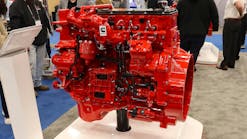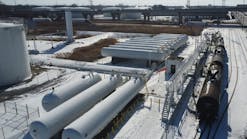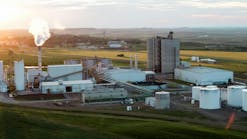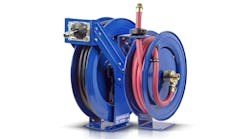New climate regulations are increasing the pressure on the trucking and bulk transportation industries.
In 2024, authorities passed or introduced major pieces of regulation that ratcheted up the pressure on trucking and the supply chain overall. In March, the SEC issued its final climate disclosure rule, requiring public companies to disclose Scope 1 and Scope 2 emissions in their annual reports and registration statements. Meanwhile, in September, California passed two new laws, SB 253 and SB 261, mandating carbon emissions and climate risk reporting that extends to Scope 3 emissions for businesses operating in the state.
The implications of these regulations are far-reaching—and given California is the fifth-largest economy in the world, there will be very few bulk transporters left untouched by these laws. Moreover, given the ongoing rise of sustainability as a matter of public and commercial concern, these regulations are probably best understood as a trend rather than an anomaly. Sustainability reporting isn’t going anywhere, and it’s likely to continue to evolve.
Multimodal logistics: An opportunity for bulk transport
Multimodal logistics offers an approach to compliance that balances operational demands with sustainability goals. Trucking, in general, is a significant culprit in GHG emissions, contributing about 23% of emissions attributable to transportation, itself the most polluting sector of the American economy.
The trucking industry has also long grappled with driver shortages, exacerbated by an aging workforce. Leveraging multimodal highlights local and regional delivery models, which allow drivers to return home nightly. This can significantly improve driver satisfaction and retention and also aligns with emerging trends in work-life balance and the desire for more flexible work arrangements. By integrating various modes of transportation and breaking down longer hauls across lower-emission modes of transportation, bulk transporters can significantly reduce their carbon footprint.
Combined with other ongoing trends, the new sustainability regulations are putting a lot of pressure on the trucking industry to electrify. But this isn’t realistic due to current grid capacity and the state of electric truck technology. While there have been promising experiments in electrifying short-distance fleets, the technology simply isn’t there yet to overhaul the entire sector. For now, integrating multimodal strategies and leveraging available technology are more realistic ways for bulk transporters to reduce emissions and comply with emerging regulations.
Practical steps for adopting multimodal logistics strategies
But integrating multimodal strategies isn’t as simple as snapping your fingers. Even simpler interventions require careful thought and planning. Here are a few practical steps for organizations looking to make initial changes.
- Assess the operation’s current transportation mix: Bulk transporters should get a firm grasp of their existing supply chains and transport routes. This assessment should include route optimization tools to identify where high-emissions trucking could be replaced with alternative solutions like rail.
- Invest in intermodal: Work with a multimodal logistics provider who can help establish connections with rail facilities and transloading sites to make it easier to consolidate rates and stay adaptable.
- Leverage technology to track emissions and report on sustainability KPIs: Implement a robust program for tracking emissions and fuel efficiency that allows for continuous improvement and upholds strict compliance with relevant regulations. By optimizing routes and consolidating shipments, carriers can maximize the utilization of their assets. This approach not only reduces costs but also minimizes environmental impact.
Resilient tank trucking produces a resilient supply chain
As sustainability and efficiency demands reshape bulk transportation, shippers must consider how to adapt their operations. Multimodal strategies offer one way to adapt without requiring drastic changes. Bulk transporters may even find themselves at a slight advantage relative to other industries, as the nature of shipping chemicals—especially hazardous materials—means that the industry will be more accustomed to working under extremely tight regulatory protocols.
While the industry will continue to rely on tank trucking for essential liquid and dry bulk logistics, integrating multiple transport modes offers a pathway to meet new sustainability expectations. But that’s not to say this shift will be easy. While not without its challenges, what lies on the other side is a more resilient bulk transport sector—and more resilient supply chains.











